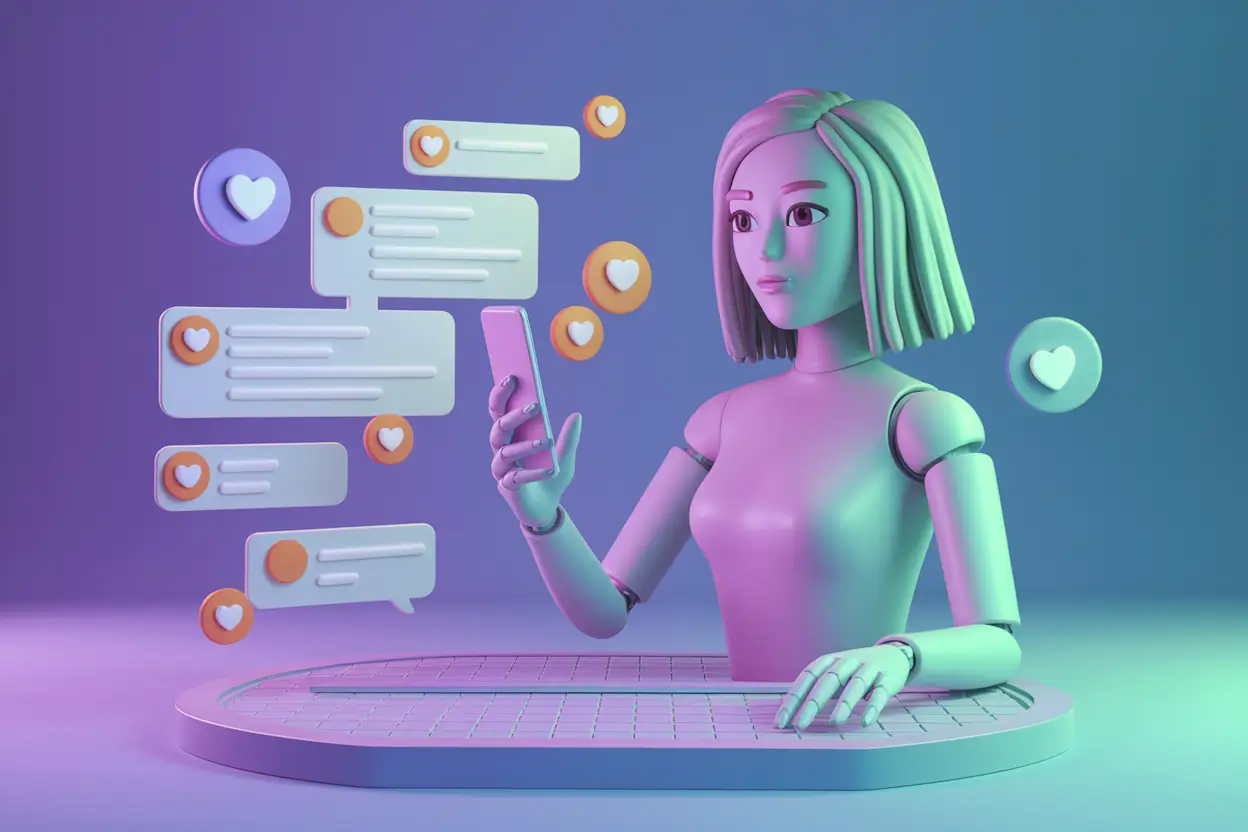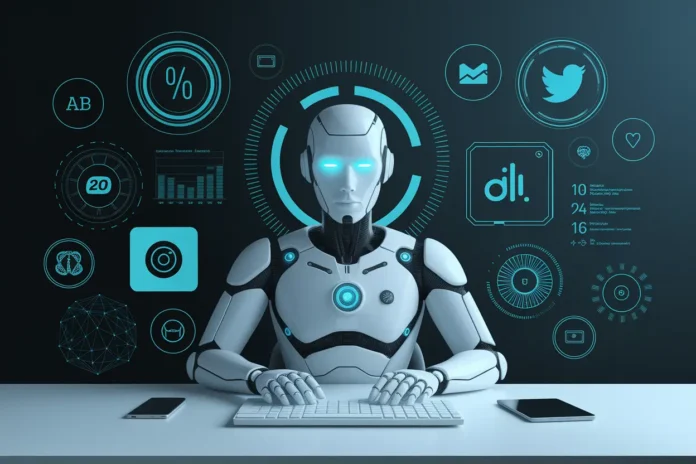AI influencers are revolutionizing the way brands communicate with online audiences, reshaping the face of digital marketing. These computer-generated personalities are created using advanced AI and 3D graphics, replacing the traditional role of human influencers. Designed to interact, influence, and entertain, AI influencers leverage technology to deliver engaging content that resonates across social platforms.
What Are AI Influencers?
AI influencers, also called virtual influencers, are digitally crafted personas developed using artificial intelligence, motion capture, and 3D modeling. They function similarly to human influencers by creating content, promoting products, and engaging with followers. These virtual characters exist solely online and can communicate with audiences around the clock without the unpredictability or limitations associated with human influencers.
How AI Influencers Work
The development of AI influencers involves a blend of creative and technological expertise. Artists and engineers use 3D modeling software to build hyper-realistic avatars. Motion capture records human gestures and maps them onto avatars. AI algorithms allow these characters to respond to comments, create social updates, and simulate genuine interactions autonomously.
Core Mechanics of AI Influencers
Several key technologies converge to bring AI influencers to life:
- 3D Modeling & Animation: Software like Blender is used to sculpt and animate lifelike avatars.
- Motion Capture: Tracks real human movement, enabling smoother, realistic avatar behavior.
- Artificial Intelligence: AI lets digital personas respond to users, generate personalized posts, and behave dynamically.
Authenticity and Human-Like Interaction in AI Influencers
One of the primary attractions of AI influencers is their ability to simulate authenticity. Through advanced text generation and body language replication, these characters can mimic genuine human emotion and behavior. This authenticity simulation helps make interactions feel natural, encouraging deeper user engagement.
Benefits of Using AI Influencers
Brands are rapidly exploring AI influencers for several compelling reasons:
- Cost Efficiency: AI influencers do not require accommodations, travel, or salaries.
- 24/7 Availability: They can post content any time and interact globally across time zones.
- Consistency: Their messaging remains on-brand, without variability or the risk of scandals.
- Scalability: An AI influencer can be replicated or modified for different campaigns easily.
- Adaptability: Brands can directly tailor AI influencers for specific marketing needs or demographics.
Challenges and Concerns with AI Influencers
While promising, AI influencers do raise some concerns:
- Emotional Connection Deficit: Some audiences may find it hard to engage with virtual characters on a personal level.
- Ethical Issues: Misleading users by not disclosing the digital nature of AI personas can lead to transparency issues.
- Technical Hurdles: Creating high-quality AI influencers demands significant resources and skilled talent.
Popular AI Influencer Examples
Several well-known AI influencers have already garnered massive followings:
- Lil Miquela: A fashion-forward virtual influencer with partnerships with major global brands.
- Shudu Gram: Touted as the first digital supermodel to appear in fashion campaigns.
- Aitana López: A Spanish virtual model designed by The Clueless agency with a highly curated social presence.
Trending Innovations in AI Influencers
The industry is advancing rapidly, with new developments reshaping interaction dynamics:
- AI Social Feeds: Platforms are launching AI-driven feeds where users engage with AI personas as they would human influencers.
- Legal Complexity: Lawsuits are emerging around content ownership, especially in cases involving AI-generated likenesses.
- Digital Clones: Brands using AI-generated versions of real humans raise questions around consent and intellectual property.
Where AI Influencers Are Used
AI influencers are redefining roles across multiple domains:
- Marketing: Promoting products in a scalable, consistent manner tailored to target markets.
- Entertainment: Hosting live streams, music videos, and scripted content as fully digital characters.
- Customer Experience: Offering helpful responses and emotional analogs during customer service interactions.
How to Create Your Own AI Influencer
Developing an AI influencer requires several stages:
- Design the Avatar: Use 3D modeling tools like Blender or Maya to create a visually appealing character.
- Animate Realism: Employ motion capture to provide fluid, accurate movements.
- AI Integration: Use frameworks like GPT or TensorFlow to give the influencer the ability to understand and engage.
Ethical and Legal Considerations
When deploying AI influencers, organizations need to prioritize:
- Transparency: Disclose that users are interacting with AI-driven individuals.
- Consent Management: Be cautious when using real human features or personas to avoid intellectual property violations.
- Content Ownership: Clearly define rights in campaigns involving AI-generated content to prevent legal complications.
Comparing AI Influencers vs Human Influencers
| Feature | AI Influencers | Human Influencers |
|---|---|---|
| Authenticity | Simulated | Natural |
| Control | Full brand control | Limited control |
| Cost | Once developed, low | Ongoing, high |
| Engagement | High with some demographics | Varies, usually higher overall |
| Scalability | High | Limited |
Use Case: Global Fashion Campaign
Imagine a fashion brand launching a seasonal campaign across Europe and Asia. Using an AI influencer, they can roll out culturally fluent posts customized for each region’s language, trend, and fashion aesthetics — all managed from a single dashboard and updated daily using AI scheduling tools.
Monetizing AI Influencers
Brands can monetize AI influencers through x:
- Sponsored content campaigns
- Licensing digital persona rights for commercial use
- Product placements and interactive shopping features in virtual environments
Common Mistakes When Using AI Influencers
1. Lack of Disclosure: Not being transparent about the AI nature can damage brand trust.
2. Poor Persona Design: Characters that don’t resonate culturally or emotionally fail to gain followers.
3. Inconsistent Messaging: Even AI needs a coherent brand voice; lack of alignment can confuse audiences.
Future Outlook of AI Influencers
The market for AI influencers is expected to skyrocket. Technology will likely make avatars almost indistinguishable from real humans. Hybrid influencer models will combine the charisma of human influencers with the consistency of digital ones. Legal and ethical guidelines are anticipated to become stricter, ensuring responsible use.
FAQ About AI Influencers
What industries benefit most from AI influencers?
Marketing, fashion, technology, and entertainment sectors see the most use, owing to their visual nature and innovation-driven audiences.
Are AI influencers replacing humans?
Not entirely. They complement human influencers by filling gaps in scalability, global reach, and interactive personalization.
What tools are required to build an AI influencer?
Key tools include Blender (for modeling), Unity or Unreal Engine (for animation), and AI frameworks like GPT or TensorFlow for cognition and language.
Can AI influencers go viral?
Yes, AI influencers can go viral just like any content creator if their content resonates with the audience and social algorithms.
Conclusion: Why AI Influencers Matter in Today’s Digital Age
AI influencers are more than a trend—they are reshaping influencer marketing. Their scalability, consistency, and technological edge make them suitable for a variety of industries. As the technology matures, they will become more integrated into brand strategies. Balancing innovation with transparency and ethical considerations will determine their long-term success in the digital ecosystem.




